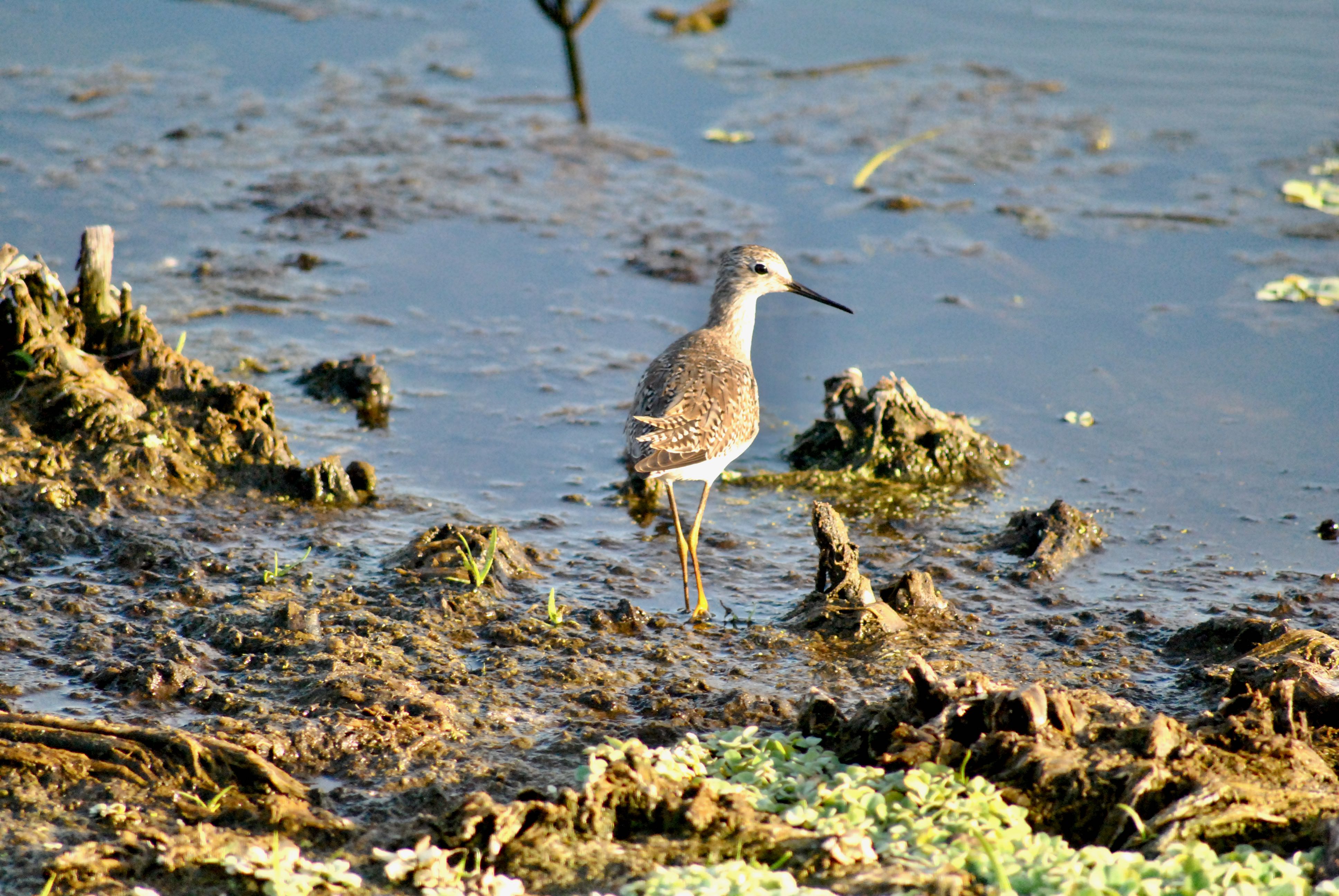
Lesser yellowlegs sandpiper, photographed at Green Cay Nature Center, Boynton Beach, Palm Beach County, in April 2013.
You really have to try hard to find a place in the Western Hemisphere where you won't find this bird. Lesser yellowleg sandpipers, Tringa flavipes, are just about everywhere, depending on the time of the year.
They breed in the far north of Canada and Alaska, and winter as far south as Cape Horn, the extreme southern tip of South America. Depending on the time of year, they're a regular sight almost everywhere in between while making their semi-annual commute.
They are regular winter residents of Florida and other places along the Atlantic Coast as far north as Virginia and along the Gulf Coast to Texas. They also winter throughout the Caribbean, Mexico, Central America and South America. Less commonly they'll winter along the coast in New Jersey and Southern California.
Their trademark, of course, are their bright, long yellow legs, which they share with the greater yellowlegs sandpiper. Differentiating the two sandpipers can be difficult. There are some minor differences in the shape and color of their respective bills, which can be difficult to see at a distance. But the biggest difference is sheer size.
Lesser yellowlegs max out at about 10 inches long, with a wingspan of about two feet. On the other hand, greater yellowlegs will reach a body length of nearly 14 inches. Still, they can be difficult to tell which one is which unless you see the two species regularly.
Solitary sandpipers are similar in size and coloration to the lesser yellowlegs, but the legs are greenish or dull yellow.
In summer, lesser yellowlegs inhabit large clearings in forests with shallow wetlands nearby. In winter, they are creatures of the wetlands, both salt and fresh. They're frequently seen foraging in shallow water and on mud flats. In migration, they'll stop off in estuaries, marshes and along the edges of lakes and ponds.
Their nests are a shallow depression in the ground, usually on a high spot and lined with grass, leaves and moss. Clutches are three or four eggs requiring about three weeks of incubation, which both parents probably provide. The offspring leave the nest soon after hatching and are able to feed themselves. Both males and females tend the young, but mom departs before they fledge, leaving dad to finish rearing the kids. First flight is about three weeks after hatching.
Lesser yellowlegs' menu includes aquatic bugs and crustaceans, terrestrial bugs, including beetles and flies, and occasionally fish and seeds. They will pick items on or just below the surface of the water and will chase down a meal on land.
The International Union for Conservation of Nature rates the lesser yellowlegs as least concern, meaning their population is secure. However, the lesser yellowlegs is on the 2014 State of the Birds Watch List as threatened with extinction because of its long migrations and reliance on habitats that are disappearing.
Lesser yellowlegs sandpipers are members of Scolopidae, the sandpiper family.
Green Cay Nature Center



